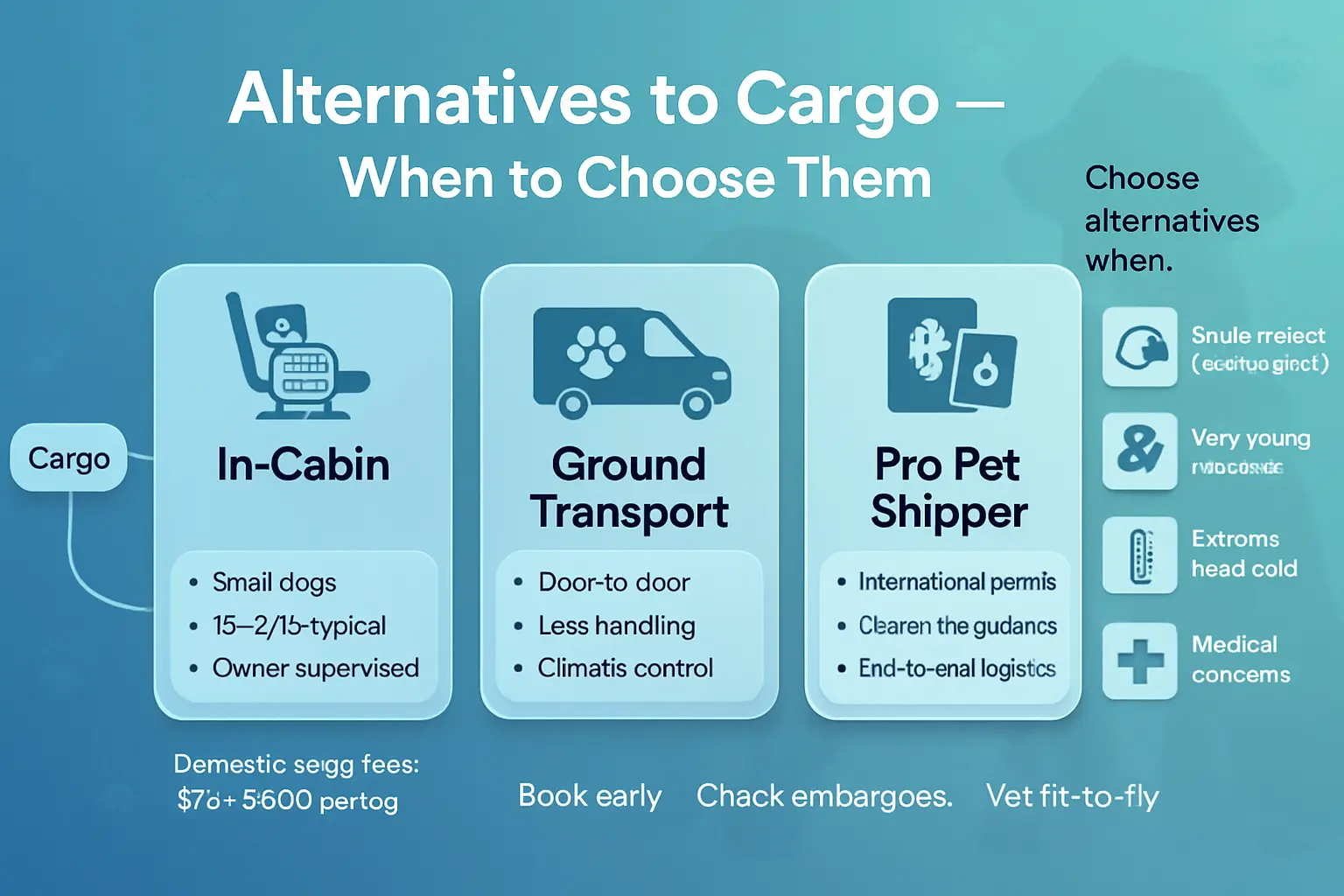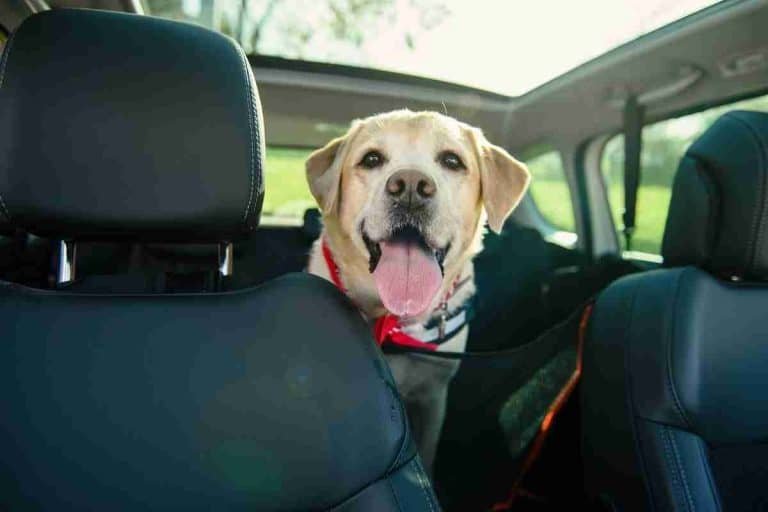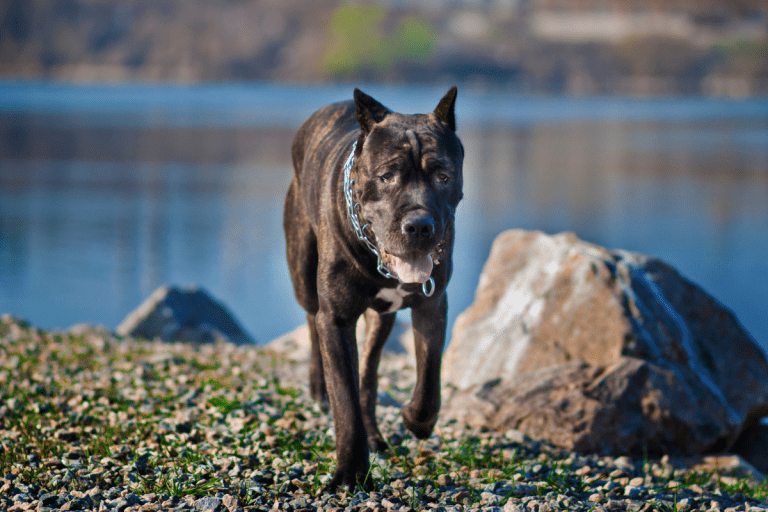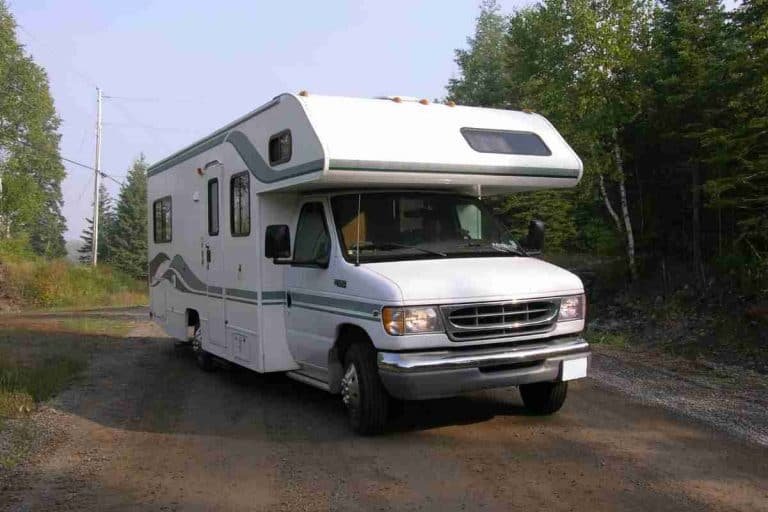5 Airlines That Allow Dogs in the Cargo Hold (Updated 2022)
Last Updated on September 6, 2025
Searching for airlines that allow dogs in the cargo hold? This updated 2022 guide lists five carriers and shows how to fly safely and legally. Policies differ by size, breed, season, and aircraft. Expect IATA-compliant crates, a current health certificate, and temperature embargoes. Owners of brachycephalic breeds should review restrictions before booking.
Inside, readers get a quick list and airline-by-airline rules for American, Delta Cargo, United PetSafe, Air Canada, and KLM. It explains booking steps, manifest vs. checked cargo, typical fees, and route limits. The post also covers crate dimensions, paperwork windows, and day-of-flight routines that reduce stress and avoid refusals. Keep reading to compare policies and prepare a dog for a temperature‑controlled, pressurized cargo flight with confidence.
5 Airlines That Allow Dogs in the Cargo Hold (Updated 2022)
Quick list — five carriers that take dogs in the cargo hold
These five carriers regularly accept dogs as checked cargo on many routes:
- American Airlines
- Delta Air Lines
- United Airlines (PetSafe)
- Air Canada
- KLM
Each airline enforces specific crate, health, and seasonal-weather rules. Owners should check size limits, breed restrictions, and blackout dates before booking. For more on breed-related limits that can affect cargo eligibility, see airlines that allow snub-nosed dogs.
American Airlines — key rules, booking route, common limits
American Airlines accepts pets in cargo through its cargo department rather than ticketed baggage. Crates must be IATA-compliant and sturdy enough for handling. The carrier restricts brachycephalic (short-nosed) breeds on many flights and may refuse breeds at high heat. Reservations require advance contact with the cargo office; same-day acceptance is rare.
Weight and size limits vary by aircraft; a dog plus crate may exceed limits on smaller regional jets. Required documents include a recent health certificate and any destination-specific permits. American sets seasonal embargoes when temperatures risk pet safety. Owners should call the cargo office to confirm routing and book as early as possible to secure space.
For handling questions and in-flight behavior concerns, consult guidance on what happens if my dog barks on a plane.
Delta Air Lines — Delta Cargo summary, age and size limits
Delta transports pets through Delta Cargo rather than checked baggage on most aircraft. Delta enforces minimum-age rules—typically at least 8 weeks—and requires updated health certificates. Crate dimensions must meet Delta Cargo and IATA standards.
Delta restricts extremely small or extremely large animals on certain routes and aircraft types. Seasonal temperature and humidity embargoes apply at both origin and destination airports. Delta offers temperature-controlled facilities at some hubs but not all; owners should confirm whether ground handling at both ends supports pet safety.
If a route carries pets in-cabin and cargo, size often determines placement. For guidance on alternatives and policies for large dogs, check resources about airlines that allow large dogs in cabin. Booking early and calling Delta Cargo yields the most accurate routing information.
United Airlines (PetSafe) — service overview and restrictions
United moves pets via its PetSafe program for animals traveling as cargo. PetSafe handles reservations, specialized holding, and ground transfers at major hubs. United requires an IATA-compliant hard-sided crate and a current veterinary health certificate.
United enforces breed-specific restrictions, age minimums, and seasonal temperature cutoffs. Long international itineraries will often require prior approval; some countries demand additional permits or quarantine. PetSafe offers monitoring during transit but not continuous in-cabin supervision.
Owners should choose a properly sized crate, label it clearly, and acclimate the dog to the crate ahead of travel. For crate-selection tips and sturdiness standards, review recommendations at best dog crates for car travel in 2023. Contact PetSafe early to reserve space and confirm documentation.
Air Canada — when and where cargo transport is offered
Air Canada accepts pets in the cargo hold on many domestic and international flights, but availability depends on aircraft type and route. Seasonal and destination temperature restrictions apply, particularly on long mid-summer or mid-winter flights.
Air Canada requires health certificates and appropriate crates. Some remote or smaller airports lack climate-controlled cargo facilities; carriers may reroute or refuse shipments when ground handling cannot guarantee safety. International travel to or from Canada may need import/export permits and vaccinations up to date.
Owners should verify whether the departure and arrival airports offer climate control for live animals. For practical travel-prep tips and trip planning alternatives, see general advice on traveling with your dog by train tips and tricks. Always confirm Air Canada cargo procedures before finalizing travel plans.
KLM — international routing, share-with-cabin rules
KLM Cargo carries pets on many intercontinental and European routes. KLM will sometimes accept pets as checked cargo when in-cabin options are full or unavailable. The carrier enforces strict crate and paperwork rules for international transfers.
KLM limits certain breeds, such as brachycephalic dogs, from traveling in cargo on specific routes. For transits, KLM may require that animals move through dedicated animal lounges at select hubs. Sharing with cabin depends on aircraft and route; when cabin space is full, cargo becomes the contingent option.
International customs, quarantine rules, and airline embargoes can complicate itineraries, so owners should verify entry requirements for each country on the route. For guidance on which breeds commonly travel by air, consult resources about dogs you can take on a plane. Book early and confirm cargo routing with KLM Cargo before travel.
Who can travel in the cargo hold?
Airlines allow only animals that meet size, health and containment rules to travel in the cargo hold. Eligibility depends on airline policy, destination rules and the aircraft type. Common requirements include an airline-approved rigid crate, a current veterinary health certificate, and proof of vaccinations. Crates must meet IATA Live Animals Regulations for ventilation, secure latches and internal dimensions so the animal can stand, turn and lie down comfortably.
Temperament also matters. Airlines reject animals that show extreme anxiety, aggression or cannot be safely loaded. Some carriers require a signed fit-to-fly form from a veterinarian issued within a narrow window before travel. International trips often add import permits, quarantine rules and country-specific vaccine timelines.
Travelers should prepare documentation and the correct crate well before booking. Pet owners can review practical packing and travel-prep advice in essential dog travel tips and gear for road trips. A quick CTA: contact the airline’s pet desk and a veterinarian at least three weeks before departure to confirm requirements and reserve a cargo space.
Age, health and breed eligibility
Airlines set minimum age and health standards for cargo travel. Many require puppies to be several weeks old and fully weaned before flying. Some carriers impose higher minimums for international service. A current health certificate from a licensed veterinarian usually must state that the dog is fit to travel and free of contagious disease.
Vaccination status factors into eligibility. Rabies and core vaccines typically must be up to date, and some destinations enforce waiting periods after vaccination before entry. Chronic conditions, respiratory issues, or recent surgeries often disqualify a dog from cargo travel until cleared by a vet.
Pregnancy and very young or senior dogs pose extra risk. Owners should consult specific guidance such as can a pregnant dog travel by car for related health considerations, and always obtain a clear fit-to-fly statement when in doubt.
Brachycephalic and at‑risk breeds — which dogs are excluded
Short-nosed, or brachycephalic, breeds face elevated risk during air transport. Narrow airways and heat sensitivity increase their chance of respiratory distress at altitude, in confined crates, or during temperature extremes. Because of that risk, many carriers prohibit these breeds from traveling in the cargo hold.
Typical breeds affected include English and French Bulldogs, Pugs, Boston Terriers, Shih Tzus and some Boxers. Airlines vary: some ban all snub-nosed dogs from cargo, while others allow only with special exemptions or require pre-flight veterinary assessments.
Owners of brachycephalic dogs should consult breed-specific airline guidance before booking. See the carrier lists and breed policies summarized at airlines that allow snub-nosed dogs. If cargo travel proves impossible, explore cabin travel options where available, or use ground transport services designed for at-risk breeds.
Seasonal and temperature embargoes that affect eligibility
Airlines enforce seasonal and temperature embargoes to protect animals from heatstroke and hypothermia. Carriers set absolute temperature cutoffs on the ground and at destination airports. If forecasted or observed temperatures fall outside safe ranges, airlines will suspend pet cargo bookings for that route or aircraft.
Embargoes vary by airline, aircraft type and crate placement. High summer temperatures and direct sun on tarmacs present the greatest hazard. Winter embargoes prevent exposure to extreme cold and risk of freezing or respiratory stress.
To avoid problems, schedule flights at cooler times of day, minimize layovers, and choose nonstop routing when possible. Confirm embargo calendars with the airline before booking, and ask how they monitor temperatures the day of travel. For more on flight-related physiological risks, consult does flying hurt dogs ears.
Required crate, paperwork and health checks

The most important step before booking cargo travel is meeting crate, paperwork and health-check requirements. Airlines and ground handlers enforce rules strictly. A compliant crate, up-to-date veterinary paperwork and a vet-signed health check reduce delays and refused shipments. Prepare documentation well before the flight and confirm requirements with both the airline and the destination’s animal-import authority. Pet owners should also prepare a travel checklist that includes sheltering, ventilation, and temperature considerations on the travel day. For guidance on sturdy, travel-ready enclosures, review best dog crates for car travel. That page highlights durable crate types and features that translate well to air cargo needs. Keep one clear folder with originals and another with scanned copies accessible on a phone. Finally, avoid sedatives unless a vet explicitly prescribes them and the airline accepts sedated animals. Confirm the airline’s policy on sedation when booking.
IATA-compliant crate dimensions and features
IATA-compliant crates must let the dog stand, turn and lie down naturally. Most airlines require hard-sided crates with secure metal fasteners and ventilation on three sides. Use a crate built from rigid plastic or wood with metal bolts; make sure the door locks firmly and cannot open under stress. Label the crate clearly with the dog’s name, owner contact, flight details and destination address. Attach a water container that stays filled during handling, and use absorbent bedding to limit mess. Remove collars or leashes that could get caught during loading. Inspect the crate for sharp edges and loose hardware before travel. For tips on stabilizing and fastening a crate in a vehicle prior to airport drop-off, see 5 ways to secure a dog crate in car. Document the crate’s internal dimensions and compare them to the airline’s published requirements; airlines differ in accepted sizes, so double-check before buying a crate.
Health certificates, vaccination records and microchip rules
Health documentation varies by carrier and destination. Typically, airlines expect a health certificate signed by a licensed veterinarian within a specific timeframe before departure. Many domestic routes require a certificate issued within 10 days; international travel often needs additional endorsements from government veterinary authorities. A current rabies certificate commonly qualifies as part of the record packet. Some destinations require proof of other vaccinations or blood titers. Microchip rules also vary: many countries and some airlines require an ISO-compatible microchip for ID. If the microchip is not ISO-compliant, carry a compatible scanner certificate or have the animal re-chipped. Keep both paper and digital copies of all certificates. For broader travel-prep guidance and document checklists, consult essential dog travel tips and gear for road trips, which outlines useful pre-trip health steps that apply to air travel too. Always request the specific time window an airline accepts for vet-issued certificates.
Airline-specific documentation and how far in advance to get it
Each airline sets its own cargo rules for pets. Some require additional shipper forms, temperature waivers, or arrival notifications to ground handlers. Airlines also limit the number of animals per flight and close cargo bookings once the flight nears departure. Book the animal’s cargo spot as early as possible. Contact the airline’s cargo desk to confirm required forms and the latest submission deadlines. In many cases, airlines ask for health certificates within 10 days of travel, but some demand shorter windows or extra paperwork for international flights. Prepare extra copies, a photo ID, and a signed release form if the airline requires one. For guidance on carrier-specific pet policies and alternatives like cabin travel for larger dogs, see airlines that allow large dogs in cabin. CTA: call the airline cargo office at least two weeks before travel to verify requirements and reserve space.
Safety, risks and airline handling practices
Airlines that transport dogs in the cargo hold treat the process as a logistical and animal-care operation. Staff follow documented procedures from acceptance to delivery. These procedures include verifying the crate, checking health certificates, and recording the animal’s flight details. Airlines also apply breed and age restrictions, seasonal embargoes, and maximum temperature rules to reduce risk.
Handlers tag each crate, note special instructions, and attach contact information. Ground staff coordinate loading sequences to avoid prolonged exposure on the tarmac. Carriers log any unusual behaviour or visible distress at check-in, and they list pets for priority offloading when possible.
Passengers should expect a mandatory inspection at departure and often another at the destination. Booking through the airline’s cargo or special assistance desk ensures proper documentation and a confirmed reservation in the cargo compartment. Confirm crate dimensions and labelling requirements well before travel.
Operational safety and animal welfare intersect: the airline focuses on minimizing time outside controlled areas and ensuring secure stowage. For guidance on passenger-side disruptions during flights, see what happens if my dog barks on a plane. Travelers should contact the carrier and a veterinarian before booking to align on risks and policies.
How cargo holds are pressurised and temperature‑managed
Most modern passenger jets use a single pressurized fuselage that includes an accessible, temperature-managed cargo compartment. That compartment stays within a cabin-like pressure range during flight. Airlines and aircraft manufacturers design systems to maintain stable cabin pressure and to mix conditioned air into the cargo area.
Temperature control varies by aircraft type and airline. Some carriers operate dedicated climate-controlled animal compartments. Others maintain general cargo temperature controls but implement seasonal restrictions when extremes exceed safe thresholds. Carriers publish embargo dates for hot and cold months.
Airlines monitor environmental limits and enforce crate labeling to show when a pet requires temperature-controlled handling. Ground delays and long stays on the tarmac pose the greatest temperature risk; carriers address this by scheduling animal flights during cooler parts of the day or offering heat restrictions.
For information on ear pressure and animal comfort during flight, consult does flying hurt dogs’ ears. Pet owners must verify that the chosen airline provides the necessary temperature and pressure assurances for the planned route.
Common causes of injury or stress and how airlines mitigate them
Injury and stress most often arise from poor crate fit, prolonged heat or cold exposure, rough handling, and pre-existing medical conditions. Separation anxiety and loud engine noise also contribute to physiological stress. Mishandled loading and unloading increase the risk of fractures or soft-tissue injuries.
Airlines mitigate these risks through multiple controls:
- Crate standards: requiring sturdy, ventilated, locked kennels with absorbent bedding.
- Training: certifying staff in animal handling and humane loading techniques.
- Operational controls: scheduling animal shipments during low-traffic times and enforcing temperature embargoes.
- Health checks: requiring recent veterinary certificates and restricting travel for ill animals.
Carriers also implement breed-specific restrictions, notably for brachycephalic dogs, to reduce respiratory events. Incident reporting and post-flight checks help identify process failures and drive corrective actions. Passengers can reduce risk by acclimating dogs to crates, using familiar bedding, and avoiding food or water right before departure to reduce motion-related distress.
For more on signs of in-flight stress and calming strategies, see dog whining on plane.
Rules on sedatives and veterinary guidance
Airlines generally discourage sedatives because they can depress respiration and mask distress. Many carriers ban sedatives for animals traveling in cargo without explicit veterinary authorization. Rules vary: some require a written veterinary statement if any sedative appears on the animal’s chart.
Veterinarians evaluate the animal’s fitness for flight, considering age, breed, and underlying conditions. They provide health certificates, recommend pre-trip vaccinations, and document any permitted medications. For brachycephalic breeds, vets often advise against tranquilizers because of increased airway risk.
Alternatives to pharmacological sedation include behaviour training, crate acclimation, short-acting natural calming aids, and scheduling the flight to reduce wait times. Owners should discuss these non-drug options with a veterinarian. Airlines may demand that medication names, doses, and administration times appear on the health certificate.
Before departure, confirm the airline’s sedative policy and present the veterinarian’s clearance. For natural measures to ease travel anxiety, consult 9 natural ways to remedy your dog’s travel anxiety. A clear consult with the carrier and the vet provides legal compliance and better outcomes for the animal.
How to prepare your dog for a cargo flight

Owners planning travel with one of the 5 Airlines That Allow Dogs in the Cargo Hold (Updated 2022) must prepare weeks in advance. Preparation reduces stress and lowers the chance of airline refusal at check-in. Start with a written timeline that lists training, vet requirements, crate acquisition, and booking deadlines. Confirm the airline’s cargo policy and temperament restrictions, then reserve cargo space early; airlines often limit pet cargo per flight.
Build conditioning into daily life: short car rides, crate sessions, and noise desensitization. Schedule the pre-flight veterinary visit four to ten days before departure to complete required tests and documentation. Choose a rigid airline-approved crate with proper ventilation and secure latches; measure the dog standing, turning, and lying down to ensure fit.
Owners can find practical gear and travel-adaptation tips in this essential dog travel tips and gear for road trips guide. Book the flight on a nonstop route when possible and avoid extreme-weather travel days. Include a clear action list for the 72, 24, and 2 hours before departure to keep tasks manageable and prevent last-minute problems.
Crate training plan and acclimation exercises
Start crate training at least six weeks before travel. Use gradual steps that pair the crate with positive experiences so the dog views it as a safe den. Day 1–7: leave the crate open with treats and toys inside. Day 8–21: encourage short closed-door sessions while the owner stays nearby. Day 22–35: increase closed-door time and add mild background noise to simulate airport sound levels.
Include acclimation to movement. Practice short vehicle trips with the dog secured in the airline-approved crate. Increase trip length every few days until the dog tolerates one to two hours comfortably. Introduce the target travel harness, crate bedding, and a worn shirt with the owner’s scent.
For crate selection and sizing guidance, consult the review of best dog crates for car travel in 2023. Train with consistency: short, frequent sessions beat long, infrequent ones. If the dog shows extreme fear, pause and consult a trainer or veterinarian about behavior modification before travel.
Pre-flight vet visit checklist (tests, meds, certificates)
Schedule a vet visit within the airline’s required timeframe. The appointment should cover a full physical, up-to-date vaccinations, and any region-specific tests. Request a signed health certificate in the format the airline requires; many carriers demand it within 10 days of travel. Confirm microchip registration details and bring proof of rabies vaccination.
Discuss medications explicitly. For dogs with severe anxiety, discuss safe short-acting options and dosing. Avoid sedatives unless the vet approves them for cargo travel; they can impair thermoregulation. Ask about flea/tick prevention and any travel-related supplements that aid hydration and calm.
Document every item the airline or destination requires. Keep both physical and digital copies of certificates, vaccination records, and the vet’s contact information. For practical anxiety-reduction strategies owners can try before medication, see 9 natural ways to remedy your dog’s travel anxiety. Arrive at the airport with all paperwork easily accessible to speed cargo check-in.
Day-of-flight routines: feeding, exercise and managing anxiety
On the day of departure, maintain calm, predictable routines. Exercise the dog with a brisk walk or play session three to four hours before arrival at the airport. That activity reduces excess energy and promotes rest during transit. Feed a light meal four to six hours before travel and withhold large feeds to reduce nausea.
Offer water up to two hours before check-in; seal a water bottle to the crate and provide a spill-proof bowl. Avoid new foods or supplements the day of travel. Keep interaction positive but brief at drop-off to limit heightened anxiety. Attach clear, legible ID and contact information to the crate.
Use short, calming cues and a favorite toy to reduce stress. If the dog has motion sickness or severe nervousness, follow the vet’s pre-approved plan. For strategies on handling motion sickness and calmer journeys, review no-more-doggie-dramas-how-to-make-car-rides-enjoyable-for-your-motion-sick-pup. Confirm cargo pickup procedures and arrival times to avoid long waits that increase stress.
What to pack inside and outside the crate
Pack thoughtfully to meet airline rules and the dog’s needs. Inside the crate include a breathable, non-skid mat, an absorbent pad, a favorite unbreakable toy, and an item with the owner’s scent. Do not use loose food; instead, attach a sealed portion of kibble to the crate exterior with feeding instructions.
Outside the crate affix the following: a waterproof name tag, the dog’s itinerary, destination phone number, health certificate copy, vaccination records, and the owner’s contact details. Include a “Live Animal” label and arrows showing crate orientation. Tape a small bag of bottled water to the crate for refills on long ground transfers.
Secure extra supplies in checked luggage: collapsible water bowl, short leash, plastic bags, and any vet-prescribed medications. For tips on securing a crate in vehicles and keeping it stable during transport, consult 5 ways to secure a dog crate in car. Prepare a simple checklist and attach it to the carrier so handlers and owners share the same plan at handoff.
Booking, costs and airport logistics
How to reserve a pet cargo spot and timing tips
Owners should contact the airline’s cargo department as early as possible. Airlines limit live-animal cargo spaces and often allocate them on a first-come, first-served basis. Call the airline or book through its cargo portal rather than relying on general reservations. Provide the dog’s breed, exact crate dimensions, and total weight when reserving. Airlines may require advance approval for certain breeds or heavy animals.
Timing matters: reserve weeks to months ahead for peak travel periods and summer months. Choose direct flights when possible to reduce handling and layover stress. Confirm weather restrictions; many carriers suspend or restrict cargo travel during extreme heat or cold. Allow time for a required veterinary health certificate — most airlines require one within 10 days of travel for domestic routes and different windows for international flights. For practical packing and crate choices, consult the guide on essential dog travel tips and gear for road trips which outlines common airline-ready crates and handling tips.
Typical fee ranges and factors that affect price
Fees vary widely by carrier, route and crate size. Domestic fees often fall between $75 and $300 per leg. International transport can run several hundred to over a thousand dollars, depending on weight, distance and required documentation. Airlines may charge a base live-animal fee plus weight-related or oversize surcharges.
Key cost drivers include crate dimensions, combined weight of dog plus crate, route class (domestic versus international), and whether the animal moves as manifest cargo or accompanied checked baggage. Seasonal surcharges, fuel fees, and airport handling fees add to the total. Additional costs can arise for import/export permits, heat-stress handling, or mandatory airline-approved crate upgrades. Research crate requirements carefully; noncompliant crates trigger last-minute upgrades and fees. For comparison of crate standards and options that influence pricing, see the best dog crates for car travel review which highlights sizes and durable models that meet many airline specs.
Connections, transfers and manifest vs. checked cargo explained
Understanding how animals move between flights reduces risk. Manifest (air cargo) moves under the airline’s cargo division and travels in a secured cargo hold as freight. Checked cargo, sometimes called accompanied baggage, moves with passenger luggage but follows different handling rules. Airlines vary in which method they allow; some route pets only as manifest cargo, others allow checked live animals on specific flights.
Connections amplify handling: each transfer means another ground handler, new loading and unloading, and potential temperature exposure. Many airlines avoid transferring animals between carriers or terminals; when transfers occur, the animal may clear into a cargo transfer area rather than stay airside. For international itineraries, customs and quarantine procedures can force re-inspection during connections. To minimize risk, select single-carrier routings and the fewest possible connections. Practical experiences and transfer caveats appear in the discussion about flying with two cats on a plane, which addresses multi-animal logistics and transfers.
What to expect at check-in and reclaiming your dog on arrival
At the cargo check-in, handlers verify identification, health certificates, and crate compliance. Expect staff to inspect crate labels, secure door latches, and attach live-animal stickers. Airlines may weigh the crate and measure dimensions to confirm the reservation details. Allow extra time at the cargo terminal — many carriers require arrival at the cargo facility one to three hours before departure for live animals.
On arrival, reclaim procedures vary by airport and whether the dog entered as manifest cargo or checked baggage. Domestic pickups often occur at the airline’s cargo facility; international pickups may involve customs clearance, payment of duties, and inspection by border veterinarians. Owners should bring original health paperwork and ID. Avoid sedating animals; handlers and vets advise against it because sedatives can increase travel risk. For secure transport from the airport and safe handling when lifting and stowing crates, consult practical tips like those in 5 ways to secure a dog crate in car. Call the airline the day before departure to confirm pick-up locations and any terminal-specific procedures.
Alternatives to cargo and when to choose them

Owners who read 5 Airlines That Allow Dogs in the Cargo Hold (Updated 2022) often still seek alternatives to cargo transport. Cabin travel, ground transport, and professional pet shippers offer lower risk for many pets. Cabin travel keeps the dog with its owner and reduces temperature and handling exposure. Ground transport avoids pressurization and cargo loading, and it often suits short to medium distances. Professional pet shippers or door-to-door couriers handle logistics and specialize in crate requirements, health paperwork, and routing.
Choose an alternative when the dog is a brachycephalic breed, very young, elderly, or medically fragile. Also prefer alternatives when flights operate during extreme heat or cold. Owners should assess cost, travel time, and the dog’s stress tolerance. Compare options side-by-side: cabin travel best for small dogs; vetted ground shippers for long interstate moves; professional pet shippers for international relocations that require paperwork and quarantine navigation.
Before booking, verify carrier dimensions, weight limits, and health documentation with the airline or shipper. For tips on moving pets overland, consult Traveling with your dog by train: tips and tricks. CTA: contact the chosen provider’s pet desk to reserve space and confirm temperature-related restrictions.
Bringing small dogs in the cabin — rules and limits
When evaluating 5 Airlines That Allow Dogs in the Cargo Hold (Updated 2022), many owners find cabin travel preferable for small dogs. Airlines require the dog to remain in an approved carrier under the seat for the entire flight. Carriers must meet size and ventilation standards and fit the specific aircraft’s under-seat space. Many carriers cap the combined weight of dog-plus-carrier, typically between 15 and 22 pounds, though limits vary widely.
Expect fees, advance reservations, and documentation such as current vaccinations. Airlines limit the number of in-cabin pets per flight, so booking early matters. Some carriers ban snub-nosed breeds from both cabin and cargo during hot months. Owners should measure their carrier and verify airline-approved dimensions before purchase or check-in. For policy examples and lists of carriers that accept animals in-cabin, see resources like airlines that allow large dogs in cabin.
Owners should also bring absorbent pads, a familiar blanket, and a leash for boarding. CTA: confirm the airline’s pet carrier rules and reserve the pet spot as soon as the flight is booked.
Ground transport, professional pet shippers and pet escorts
The title 5 Airlines That Allow Dogs in the Cargo Hold (Updated 2022) highlights aviation options, but ground transport and pet shippers remain strong alternatives. Ground transport firms operate scheduled routes and private transfers. They use climate-controlled vans, GPS tracking, and trained handlers to reduce stress. Professional pet shippers arrange door-to-door service, crate compliance, and international paperwork. Pet escorts provide individualized supervision and often accompany animals on commercial flights or road transfers.
Select providers with verifiable insurance, references, and clear emergency protocols. Ask for crate specifications, temperature-control policies, and how handlers manage rests, hydration, and vet access. Compare costs against airline cargo fees and the emotional cost to the animal. For practical packing and gear advice for road moves, consult essential dog travel tips and gear for road trips.
Obtain a written service agreement that lists pickup/dropoff times, handling procedures, and contingency plans. CTA: request references and proof of transporter credentials before payment.
When you should delay or avoid flying your dog
Readers of 5 Airlines That Allow Dogs in the Cargo Hold (Updated 2022) must recognize when flying could harm a dog. Delay or avoid air travel if the dog is under the airline’s minimum age, pregnant near term, recovering from surgery, or has serious cardiac or respiratory conditions. Brachycephalic breeds face heightened risk of respiratory distress in cargo and sometimes even in cabin travel. Extreme heat or cold on travel days also warrants postponing a flight.
Other red flags include severe anxiety or motion sickness that medication cannot safely control. If a dog shows unstable medical signs, the veterinarian should clear travel in writing. For guidance on how flight conditions affect a dog physiologically, see relevant resources such as does flying hurt dogs’ ears. Owners should choose ground alternatives or delay travel until a vet determines the animal fit to fly.
CTA: schedule a pre-travel veterinary exam and secure a written fitness-to-fly certificate when the risk factors exist.
Frequently asked questions and a travel-ready checklist
Short answers to common concerns (safety, insurance, delays)
Travelers often ask if the cargo hold is safe for dogs. Most modern cargo compartments on passenger jets are pressurized and temperature-controlled. Still, airlines restrict certain breeds, particularly brachycephalic dogs, because they struggle with heat and breathing. Confirm breed rules with the airline before booking.
Will insurance cover problems? Standard travel insurance rarely covers pet transport issues. Pet-specific plans may offer limited coverage for veterinary care after travel or loss; read policy exclusions carefully and keep receipts and vet records.
What about delays and missed connections? Book direct flights when possible. If a connection is unavoidable, request the airline route the animal as manifest cargo on the same flight sequence. At the airport, confirm the cargo hold status at check-in and obtain a cargo manifest number. If delays occur, the airline’s cargo desk must provide holding instructions and contact details.
Should owners sedate pets? Vets usually advise against sedation. Sedatives can impair breathing and temperature regulation. Instead, use crate training and short acclimation trips to reduce stress. For more on how flight conditions affect pets, see does flying hurt dogs ears.
When questions rise during booking, ask the airline cargo agent for written guidance. Keep copies of all communications and documentation.
One-page pre-flight checklist to download or print
This checklist keeps paperwork, safety, and crate prep tight. Owners should print one copy and keep a digital photo on their phone.
- Vet paperwork: Health certificate issued within the airline’s required window; vaccination records; microchip info.
- Crate: IATA-compliant, sturdy, with secure latches and ventilation on three sides; familiarized with the dog days before travel.
- Identification: Collar tag with owner phone, flight details taped to crate, and a travel photo of the dog inside the crate.
- Hydration and feeding: Attach a spill-proof water bottle or dish; avoid heavy meals within four hours of check-in.
- Labels and paperwork: “Live Animal” stickers, orientation arrows, emergency contact sheet, and manifest number attached externally.
- Weather check: Verify forecast for origin and destination; airlines may embargo pet cargo during extreme heat or cold.
- Arrival plan: Confirm who will pick up the animal at destination cargo and bring a copy of ID and release forms.
For gear suggestions and crate options that suit air travel, consult this guide to essential dog travel tips and gear for road trips. Print this page and clip it to the carrier as a handy pre-flight reference.
Summary
This guide names five major carriers—American Airlines, Delta, United (PetSafe), Air Canada, and KLM—that regularly accept dogs in the cargo hold and explains how their policies, seasonal embargoes, and aircraft limits affect eligibility. It outlines the rules that matter most: IATA-compliant crates, current veterinary health certificates, breed and age restrictions, and temperature thresholds at departure and arrival.
Readers also learn how to plan a safer trip: book through each airline’s cargo desk, crate-train weeks ahead, choose cooler flight times, and prepare a complete document packet. When cargo isn’t a good fit—especially for brachycephalic breeds or during weather extremes—the post highlights alternatives like in-cabin travel, ground transport, and professional pet shippers.
Key Takeaways
- Five cargo-friendly airlines: American, Delta, United (PetSafe), Air Canada, and KLM—each with unique breed, size, and seasonal rules.
- Book early via cargo desks: Provide crate dimensions, pet weight, and breed; flights limit live-animal spots and enforce embargoes for heat/cold.
- Meet IATA standards: Use a hard-sided, ventilated crate with metal fasteners, clear labels, spill-proof water, and absorbent bedding.
- Prep health documents: Obtain a recent vet health certificate, vaccination proof (rabies and others as required), and any import/export permits or microchip details.
- Reduce risk: Crate-train 4–6 weeks in advance, choose nonstop routes, avoid sedation unless a vet and airline approve, and plan day-of routines for calm travel.
- Know costs and options: Expect roughly $75–$300 per domestic leg (more for international); consider cabin or ground transport for at‑risk dogs.
FAQ
- What airlines allow dogs in the cargo hold? American Airlines, Delta Air Lines, United Airlines (PetSafe), Air Canada, and KLM commonly accept dogs as cargo on select routes, subject to aircraft, weather, and policy limits.
- How safe is the cargo hold for dogs? Most modern jets have pressurized, temperature-managed cargo compartments, but risks remain from heat, cold, and handling. Safety improves with proper crates, weather-aware scheduling, and strict adherence to airline rules.
- What documents and crate specs do airlines require? Expect an IATA-compliant hard-sided crate, a recent veterinary health certificate, vaccination records (rabies and destination-specific), and, for many countries, an ISO microchip. Labels and contact info must be affixed to the crate.
- Why are brachycephalic breeds often restricted from cargo? Short-nosed dogs face elevated respiratory and heat risks during transport, so many airlines limit or prohibit them in cargo to protect their health.
- How do you book and how much does it cost? Reserve through the airline’s cargo department with crate size, pet weight, and route details; book weeks in advance. Domestic fees typically run $75–$300 per leg, while international trips can cost several hundred to over a thousand dollars depending on weight and distance.







